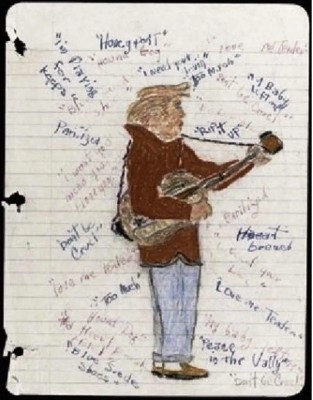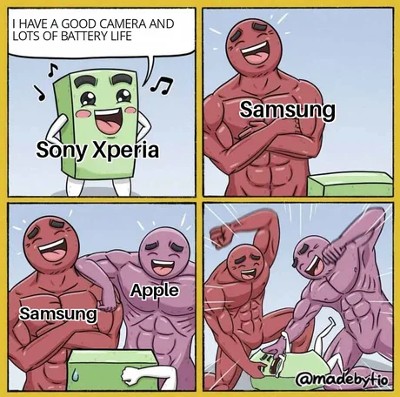The May 17, 1995 San Diego Tank Rampage: A Story of Chaos
The 1995 San Diego tank rampage was a shocking and destructive event involving the theft of an M60A3 tank by Shawn Timothy Nelson, who wreaked havoc on suburban San Diego. Nelson, a California native and United States Army veteran, stole the tank from a California Army National Guard armory and drove it for six miles, destroying cars and infrastructure along the way.
The incident ended when San Diego police shot and killed Nelson. This article delves into the background, the incident itself, and its aftermath, exploring the life of Nelson, the tank rampage, and the changes it prompted in military security.
A Georgia National Guard M60A3 tank at Fort Stewart
Shawn Nelson
Shawn Timothy Nelson was born on August 21, 1959, in California, the second of Betty and Fred Nelson's three sons. He attended James Madison High School and later married Suzy Hellman in 1984. Nelson enlisted in the United States Army in 1978, where he trained at Fort Knox and served as a tank commander in Germany with the Armor Branch. He was honorably discharged in 1980 due to "multifaceted disciplinary problems." After his military service, Nelson pursued a successful career in plumbing, eventually starting his own business in San Diego in 1991.
However, Nelson's life began to unravel in the early 1990s. He struggled with substance abuse, and his personal and professional life deteriorated. His wife left him in 1991, and his business declined after his van and plumbing tools were stolen in 1994. By May 1995, Nelson faced severe financial and personal setbacks, including unemployment, the foreclosure of his home, and eviction. He also had a history of medical problems, including a spinal fracture from a motorcycle crash.
Nelson's behavior became increasingly erratic, and he gained a reputation for unusual activities such as mowing his lawn at night and digging for gold in his backyard. His neighbors frequently called the police, who visited his home multiple times in 1994–95 for various complaints.
The Tank Rampage
The California National Guard armory in San Diego was surrounded by an eight-foot chain-link fence topped with barbed wire. On the evening of May 17, 1995, the armory's gates were unsecured because personnel were working late. Nelson drove his van onto the property, broke the padlocks on three different tanks, and started an M60A3 tank. The M60A3 is a 57.3-tonne tank equipped with a 7.62-mm machine gun, a 12.7-mm heavy machine gun, and a 105-mm tank gun, although the weapons systems were unloaded at the time.
At approximately 6:45 p.m., Nelson crashed through the armory's gate in the tank and drove through residential San Diego neighborhoods. Over a distance of six miles, he intentionally destroyed traffic lights, a bus bench, 40 cars, fire hydrants, and utility poles, disrupting electricity to around 5,100 households. Remarkably, no one was injured during the 25-minute rampage.
The San Diego Police Department (SDPD) learned of the incident at 6:46 p.m. when a detective reported following the tank. SDPD units intercepted the tank, and California State Route 163 (SR 163) was closed. Nelson demonstrated his tank-driving skills, suggesting he knew what he was doing.
Nelson's Death
Nelson's rampage ended when he crashed the tank into a three-foot traffic barrier on SR 163, near Sharp Memorial Hospital. The impact dislodged one of the tank's tracks. Four SDPD officers boarded the tank and used bolt cutters to open the hatch. Nelson refused to surrender and attempted to dislodge the police by spinning the tank. With no means to penetrate the tank's armor and uncertain if Nelson was armed, police shot him. Reports vary on where Nelson was shot, but it was confirmed he died from gunshot wounds.
Aftermath
Nelson's friends criticized the police for using lethal force, suggesting they should have employed tear gas or crisis negotiation. However, SDPD captain Tom Hall defended the decision, stating they needed to stop Nelson's rampage. The California Guard was found negligent and responsible for the incident, resulting in the state paying a total of $149,201 in damages to Pacific Bell, the city of San Diego, San Diego Gas & Electric, and individual citizens.
In response to the incident, the National Guard planned to send additional tanks to assist in removing the disabled tank from SR 163. The Guard confirmed that vehicles entering the armory grounds were not checked despite heightened security following the recent Oklahoma City bombing. Major Ed Gale reported that Nelson had broken an exterior lock to access the tank, marking the first tank theft at the armory. By the next day, the batteries were removed from 28 more National Guard tanks in Southern California, and San Diego Mayor Susan Golding demanded an investigation into the armory's security.
By November 1996, the National Guard had improved security measures at its armories and moved all its tanks to either Fort Irwin or Camp Roberts, ensuring such an incident would not happen again.
Get Free Gifts & Best Stories!
Join our newsletter to get our top stories of the month and free merch.
- 📚 Cool Stories: Read stories you won’t find in textbooks.
- 🎁 Free Gifts: Get exclusive stickers, t-shirts, and more!
Only 1 email a month. No spam, we promise!

